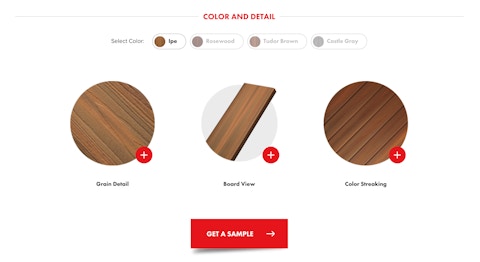Design is often thought of as too subjective, too intangible, and too “touchy feely,” but we’ve seen first hand how thoughtful, strategic design can improve lead generation, raise awareness, and grow sales.
Everyday, we work with building materials manufacturers who know they need help with their design efforts, but don’t know exactly where to start
First, let’s think about design for a moment. What comes to mind?
If you’re like most, you’re probably picturing some pretty colors, cool shapes, and fonts … lots of fonts.
At Venveo, we approach design a bit differently.
Design isn’t supposed to just sit there and look pretty, design is supposed to do something. Bad design does nothing, or worse, it creates a clunky, hard to navigate website that results in losing potential sales.
Good design helps you clearly communicate your message and brand in a consistent, positive way. A well designed website gets potential customers to the information they need quickly, which means more leads and more sales.
That’s why everything we do, we do it with intent.
Every decision we make, from larger strategies, all the way down to those menial buttons, colors, and yes, even fonts, it’s all about accomplishing a specific goal. Each design element influences how your audience perceives your brand.
So many of your audience’s decisions regarding your products are happening online—even if you’re not selling online, what you’re doing online impacts your sales. Being intentional and selective about design decisions is critical to the success of your online marketing.
In the building materials industry, manufacturers are only just starting to discover a fact that’s been well known in the technology business for years: design can make or break your company.
There’s a reason so many people are willing to shell out thousands of dollars on an apple computer when a comparable pc could be even half the price.
It’s the same reason that drives those customers to try to induct every other PC user into the “cult of Mac.” The reason is simple: good design turns your average customer into avid fans … but how?
At the heart of every design problem are the people we’re designing for.
On a website, we call them “users.” In marketing, they go by “audience.” Sales will call them “customers.”
Whatever they may go by in whatever context, there is no denying the fact that the most important interactions your business is having, are with people.
And guess what? Those people are out there looking for any opportunity to get help with their problems.
Some examples of problems your customers might encounter:
- Chad the architect can’t find specification documents for the specialty lighting he was planning to use. He needs an easy-to-navigate menu for documentation so he can spec the products he wants, and look like an architectural badass to his clients.
Your products and your documentation translate to his success
- Beth the homeowner is looking at re-doing her bathroom and has no idea where to start. She needs a getting started guide for bathroom remodelling. She’s not searching google for your product. She’s searching for help.
Let your business be a part of that help.
- Ben the hotel owner wants to get rid of the dingy old carpet in the event room. He needs new flooring, but what kind of flooring that’s going to be best for his space?
Help him decide by presenting him with all his options and giving him a flooring visualizer to see for himself.
A real-life example
When we redesigned Fiberon Decking’s website, our market research showed us one very important thing that no one in their product category was addressing: Composite decking shoppers needed to see, up close, what the boards looked like in order to be confident in their buying decision.
In the case of composite decking, the product aesthetic accounted for an overwhelming portion of a customer’s buying decision. Within this need and this insight, we saw a design opportunity.
So, when we redesigned Fiberon’s product pages, we added a section dedicated to the look and feel of the product, showing high-resolution imagery of the product in three different contexts:

We also placed a strong call to action underneath this functionality, encouraging people to order a sample—the next logical step for determining which board to buy.
The results were extraordinary:
Sample requests for Fiberon deck boards tripled!
Hopefully by now you’re starting to piece together how design can have real impact, but what can it do for sales?
Apple answered people’s problems with computers by crafting better interfaces and better hardware, and their sales skyrocketed. How might we apply this to building materials?
The first step is accepting the fact that your company, your product, is not the hero of this story. The customer is. Let’s take a look at our problem scenarios from before to get an idea how these hypothetical scenarios play out:
- Do you think Chad will buy your lighting over someone else’s if he can’t find their documentation? Absolutely!
- Will Beth be more likely to buy your sink or countertop if you’ve already helped her pick the look she wants? You betcha.
- And is Ben going to be more likely to opt for your flooring if you’ve helped him visualize exactly how beautiful it will make his space? Undoubtedly.
If you empower your customers to be the heroes of their own journeys, you’ll earn their trust, their goodwill, and their business. People-centric design can help you solve problems just like these, and solve them with aplomb.
If you’re ready to start doing more for your customers and start kicking the pants off your competition, let's get in touch:








